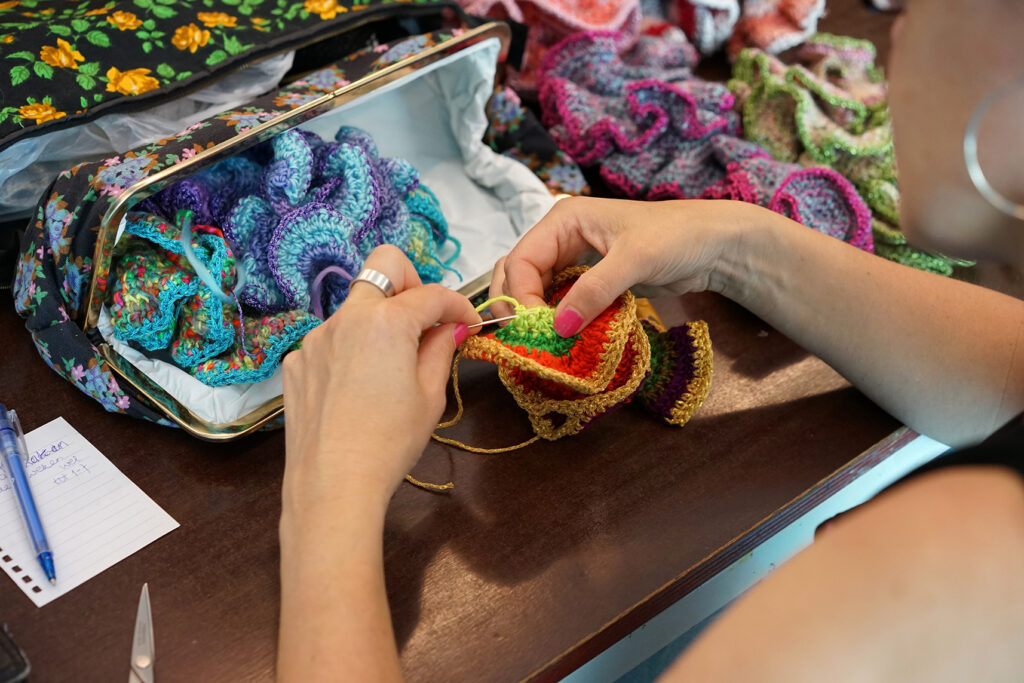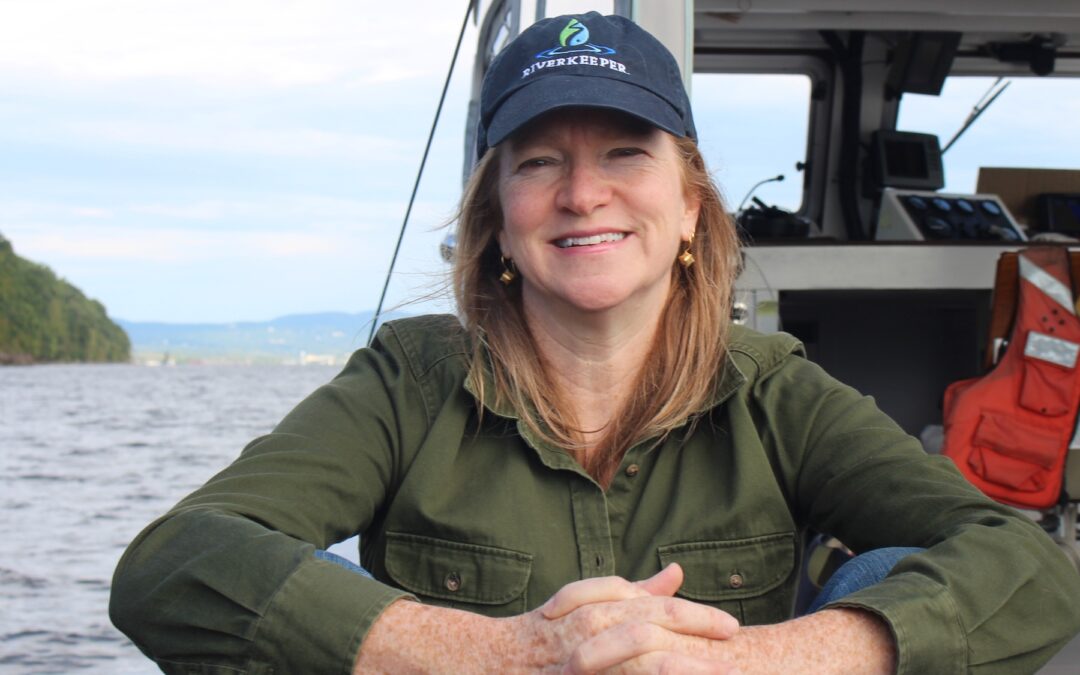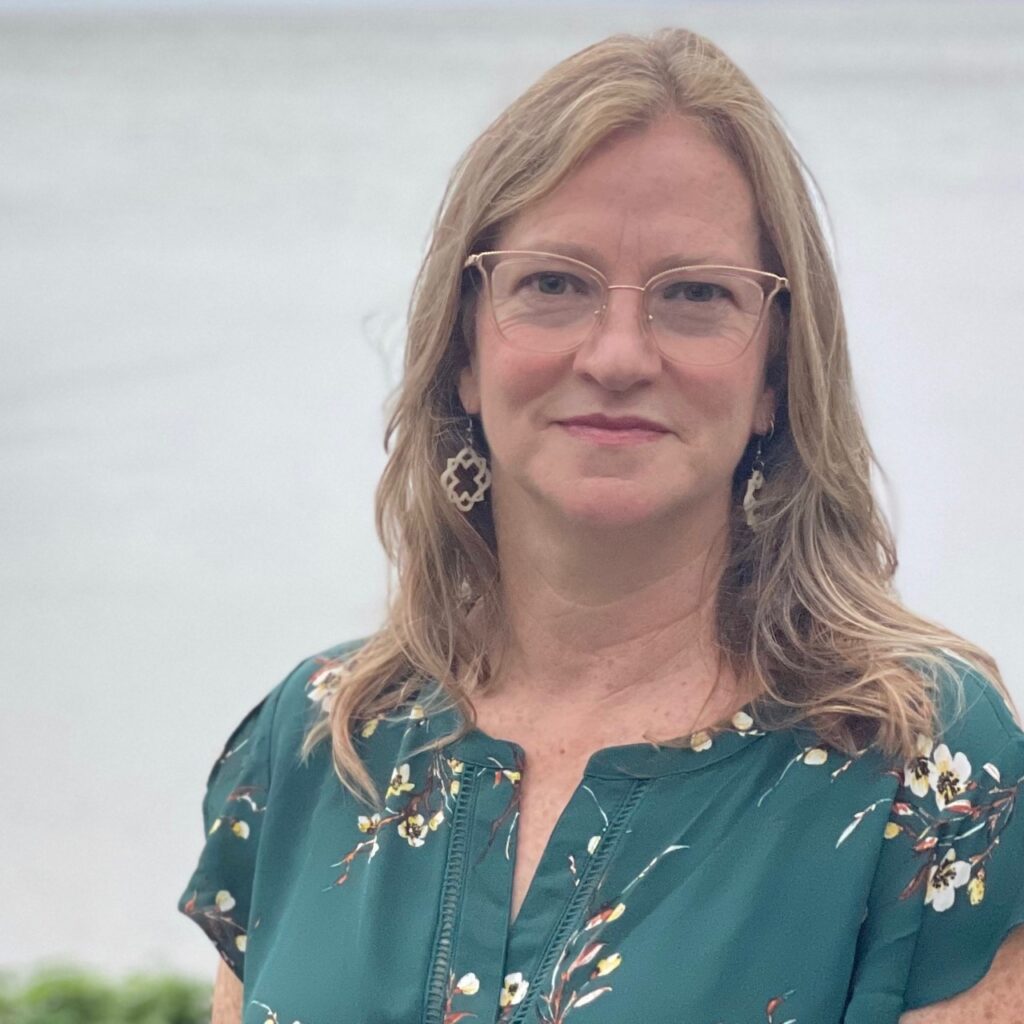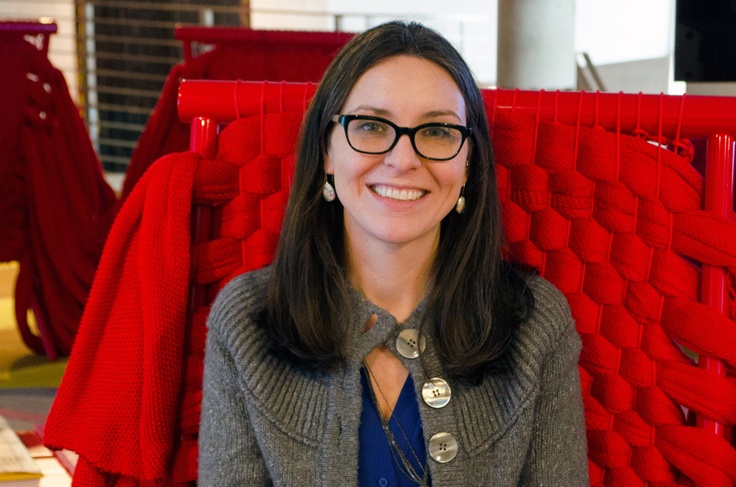
On this week’s 51%, we speak with Tracy Brown, the new president of Riverkeeper, about how nature-based infrastructure can combat pollution in the Hudson River. We also get crafty with the Tang Teaching Museum and Art Gallery in Saratoga Springs, New York, as part of a global art project drawing attention to the impact of climate change on coral reefs.
Guests: Tracy Brown, president of Riverkeeper; Rebecca McNamara, assistant curator at the Frances Young Tang Teaching Museum and Art Gallery at Skidmore College
51% is a national production of WAMC Northeast Public Radio. Our host is Jesse King, our executive producer is Dr. Alan Chartock, and our theme is “Lolita” by the Albany-based artist Girl Blue
Follow Along
You’re listening to 51%, a WAMC production dedicated to women’s stories and experiences. Thanks for tuning in, I’m Jesse King.
This week we’re touching on a topic that, really, affects us all. Climate change and environmental devastation is perhaps the biggest issue confronting our planet. In 2018, a report by the Intergovernmental Panel on Climate Change found that humans need to achieve net-zero carbon emissions by 2050 in order to avoid the harshest results of rising temperatures. To get on track for that, the United Nations says countries should cut their emissions in half by 2030. The state of New York hopes to reduce its economy-wide greenhouse gas emissions by at least 85 percent (compared to 1990 levels) by 2050. And in November, voters widely approved the Environmental Rights Amendment, granting citizens the right to clean air and water in the state’s constitution.
Discussions on climate change have also prompted a closer look at our rivers and water supply. Last month, the advocacy organization Riverkeeper appointed its first female president and Hudson riverkeeper in its 55-year history. Tracy Brown actually worked with the organization as its Communication Director from 2007-2014, helping it push for the passage of New York’s Sewage Pollution Right to Know Law in 2013. As someone who lives by the Hudson River and frequently swims in its waters with her family, Brown says she’s happy to be back and watching over the river she loves. I got the chance to ask Brown about the state of the Hudson, and her goals for Riverkeeper.
Let’s start with the significance of the Hudson River. What makes it different from other rivers?
Well, the Hudson is called American America’s river because it really was, you know, the founding river, so to speak. It’s where Henry Hudson came over 400 years ago, and it is a beautiful estuary. Estuaries are where you have a water body, where the ocean and freshwater mix. So you have this mixed, what we call “brackish,” water. That makes for a really abundant habitat. Estuaries are actually the most biodiverse and abundant habitats on the planet. They’re kind of like nurseries for fish, and then also for birds and other wildlife that rely on fish and feed on fish. So it’s this incredibly abundant source of food and also a really critical connection from New York and the East Coast of America up through the middle of the country, by way of what is now the canals, up north of Albany that connect the Hudson over to the Great Lakes, and then you know, the Mississippi in the middle of the country. It’s an aquatic breadbasket. It’s a major trading route. It’s a major transport route for goods and services. And that’s really why New York City and other cities that were built on the Hudson, and really flourished and became centers of commerce from America – because there is such abundance in the river. And it connects with the estuary that is the Long Island Sound, when you get down by New York City. So a very vital and life-filled system that’s really defined the growth of this region.
What is the state of the Hudson River today? Both positives and negatives.
It has gotten better in terms of we’ve had darker days, when really our rivers were basically just used as toilets, honestly, and dumping grounds for industry. Since we passed the Clean Water Act in 1972, that really drove a lot of cleanup of those more egregious disregards for our waterways. So it certainly has come back from that era. But there’s still a lot of stresses. And of course, the widespread stress that we’re all talking about now is the impacts of climate change. We know that the Hudson in the past century has already warmed. There’s already at least a 4 degree Fahrenheit increase in water temperature, and the river has risen a foot in height over that period of time. And so the continued warming, the rising, and then for our region in the northeast, one of the big manifestations of climate change is we’re getting these bigger, flashier rainstorms. The storms themselves are actually a delivery system for pollution, especially around New York City and Albany, where you have these old sewer systems that are designed to overflow directly into the waterway every time they hit a certain level of rain. They don’t have the capacity to take all the sewage and the rainwater, so it dumps into the open waterways. So the increased precipitation is causing problems of increasing pollution. And the warming causes a stress to the native fish species, which are definitely taking a hit and are already somewhat vulnerable, for all that they have survived. Those are our biggest concerns. It’s really the impacts of climate and then the pollution that climate impacts are driving into the river.
I’ll say also for myself – I also worry that we’re at another false choice, that people are being told they have to choose between access to healthy waterways and rivers and streams, or no flooding and safety for their person on their property. And that is a really misleading false choice. Our rivers have the ability to buffer us to absorb more rainwater, to slow down rainwater if we let them flow free. And if we protect wetlands and buffer zones and let them serve as the natural sponges that they’re designed to be. But I worry that in the face of flooding and sea level rise, people are going to be motivated to put up more sea walls, and to harden shorelines, and to channelize rivers and streams that run through their community, just hoping they can take high waters and push them as fast as they can from their town to the next downstream town. If we go that route, we’re really heading in a bad direction. Most of the life and the reproductive power in the activity that happens on the rivers are in that zone between the shore and the edge of the waterways. It’s so important that we keep that habitat, and that we don’t put hard edges on our shoreline, so that the rivers can actually grow and expand as the sea level does rise, and causes our rivers to also rise. That we let them kind of naturally evolve to whatever the next right sizes for them, and we provide land and room for that. So I think that’s a big stress in terms of just trying to get people to understand that, you know, biomimicry and nature-based infrastructure is going to by far have better outcomes for all of us in the long term, and we shouldn’t try and build our way out of this crisis with walls and levees and sea gates.
Specifically, when you’re talking about nature-based infrastructure, what are some methods of that, and ways to allow rivers to flow more freely?
Yeah, so that’s a great question. We want to start by removing dams that aren’t, you know, absolutely critical related to human health, so we can reconnect rivers and have them flow in their natural state. And then we want to make sure that we have large enough buffers on the edge of all the rivers so that they can swell and reduce, and that there is landscape there. Ideally, marshes and wetlands, that can absorb those extra flushes of water, when we do have these flashy rain events that will be more and more common. So it’s important to not just look at the footprints of our rivers right now, but to make sure that we’re not building right up to the edge, and that we’re allowing room for that spillover. And the more we have those natural buffer zones, they both help clean the water that’s coming off the landscape into the waterway – so they can be a filter of our pollutants and garbage (As water flows off our landscapes, lawn fertilizers, and even just marine debris and physical garbage can be captured and removed, if people are doing that work.) – but also, when the water’s coming in, if you have something like a storm coming in from the ocean, those living shorelines can provide a buffer. And they can also slow down the wave energy and break the wave energy further away from the homes and properties, if it’s not, you know, a storm surge that’s coming right in and hitting a wall or riprap. It’s much better for it to come in and work its way through a marsh. And that slows things down and helps reduce flooding damage.
Just in your day-to-day, what kind of work is entailed in maintaining the current quality of the river?
So at Riverkeeper, the regular work that we do, our kind of bread and butter work, is a combination of doing scientific monitoring – so we understand the conditions in the river, and can report that out and identify pollution hotspots and take action. Then we have community engagement where we have a whole bunch of ways that we partner with the public. One of the most well-known ways is our annual sweep event, where we go out and collect tons of garbage, literally tons, all along the Hudson and try and address the marine debris crisis by keeping that garbage from flowing down the Hudson and out into the Atlantic Ocean. So that’s a big piece of it, and annual maintenance. And then we also work with partners in communities on specific threats to the waterway. So for today’s discussion, you know, one example would be our work on fighting back against polluting energy infrastructure, and fighting for renewable energy infrastructure to come into the region so we can hit the state’s climate goals. So that’s, you know, everyday work of lobbying and supporting communities on their climate plans. Right now we’re doing a look at the climate smart communities’ goals in the communities that we work with in the Hudson Valley, and seeing where we can help communities move forward and achieve those goals.
Are there ways that you feel government can step in to make that job easier?
Well, certainly passing the Build Back Better is going to be a huge step forward, and getting the dollars from the infrastructure act that was passed – those are both big steps in the right direction. Those are going to enable New York state and all the communities within the state and across the country to start to work on the bigger infrastructure issues that are really key and underpinning all of this work. So that’s very important, making sure that EPA and NOAA and FEMA and the Army Corps, all these critical federal agencies that are involved in this work, have the right priorities and support to do their work.
There was something this past year that was very important, which was President Biden passed an executive order asking for the federal agencies to review their practices and their investments, to look at environmental justice and to really kind of root out places where there is structural racism that could be reflected in, you know, the way investments are being made, the way projects are being prioritized. That is one thing that we definitely see on the ground here. So that was a very welcome call from the president. And we’re really looking forward to seeing how that’s gonna change up business as usual, especially when we experience our next big storm. At this point, we know there’s always going to be a next big storm to anticipate – [it’s important] to see how FEMA comes in, and the other agencies, and to make sure that they equally value communities where maybe the real estate value isn’t as high, the density isn’t what they’re looking for. And that, you know, they find other lenses and other ways of looking at communities who aren’t able to participate as fully right now in promoting their own needs by having a professional grant writer, or someone who can lobby and reach out to local officials, because they’ve been dealing with structural racism. You know, how can we go and meet those people where they’re at, and make sure that they’re also getting the benefits that the more organized and affluent communities are able to get just because they have more resources to engage in that process.
Now, I know a big topic, at least here in New York state, has been addressing PFAS chemicals found in local water supplies. Can you tell me a little bit about Riverkeeper’s efforts on that end, and what you feel is the next step?
Riverkeeper has been very involved in the drinking water crises that we’ve been seeing in communities in New York State, where they have these surface drinking water supplies / reservoirs that are vulnerable to pollution coming in from storm runoff and streams that feed the reservoirs. We had a real crisis, for example, in Newburgh, where it was discovered that their drinking water supply had been contaminated by PFAS, and Riverkeeper worked closely with partners in that community to document and raise the flag on that issue, [and] make sure that they were able to get alternative drinking water supply – and equally importantly, to lean in on legislative and regulatory actions that will keep this from happening in other communities.
So we took two steps to get at this problem of PFAS, which is now so prevalent in our environment. And, you know, in the case of Newburgh, it was their proximity to the airport, where you have PFAS in the firefighting foam that really made it such a high concentration and a problem there. That airport is now a Superfund site, because so much of this forever chemical was found on that site, and it now needs to be remediated. So two critical things happened, Jess: one was that New York, the Department of Health agreed to set criteria for limiting the amount of PFAS that was getting into our drinking water supplies. So they went through a process, that we participated in, and set a maximum acceptable amount as a target. It is one of the most protective standards in the country, although no amount of these chemicals are safe for human consumption. So we really should be at zero, but you know, given limits of technology and funding, there is at least now a protective standard in place. Another action that we took that we’re actually still waiting for a conclusion on is to push the Department of Health to start assessing more regularly what other chemicals are in our environment that are impacting human health, and specifically getting into our surface drinking water supplies, that need to be addressed. Like the PFAS chemicals, and 1-4-dioxane, that was also covered in this recent legislation. On that front, there was legislation that was passed and that is waiting for Governor Hochul’s signature, that will actually tell the Department of Health that they have to start doing testing and working on building a list of contaminants that need to be addressed in New York state. This is critically important, because honestly, the federal government has not been sufficiently active (that’s an understatement) in looking at emergent contaminants and protecting the public, and updating the federal list. So unfortunately, this test falls to our states. We’re happy that we were able to lobby in support of this legislation and that it was passed in the House and in the Senate, and we really urge Governor Hochul to call for that legislation and sign it into law. We can prevent other communities going through the incredible stress, and really the public health exposure, that was so unnecessary and that we’ve already seen in communities like Newburgh and Hoosick Falls, and others around the state.
Lastly, just to wrap things up, what are your goals as president? Are there any projects in the works that you’re particularly excited about?
Yeah, so I’m really interested in building up Riverkeeper’s capacity to do adaptation work. At this point, we do a lot on mitigation and focusing on energy sources and reductions in conservation. But now that we know climate change is here, and we’re already seeing the impacts, I think it’s also really important that we work with local communities to get adaptation projects on the ground. So I’m talking about things like stormwater technologies that use green infrastructure, like green roofs and rain gardens and bioswells. Building artificial wetlands, removing dams, helping river connectivity – it’s really important that we get out in front of the infrastructure that we’re going to need to help communities maintain their quality of life, and keep access to the waterways, and have some cooling, and have clean water that they can drink, and get in, and swim / paddle in. So doing projects that address those needs and doing them now before too much of those same challenges are addressed with walls and levees and sea gates. That’s a priority for me. We’re really happy about the work that’s gotten done so far. And we’re proud to be in New York, where there are such ambitious goals. And we look forward to continuing to collaborate with the governor’s office and the elected officials to work on those plans and achieve those goals, so we can we can have a model of success and support other communities [hoping] to meet similar goals.

We’re going to get artsy now with the Frances Young Tang Teaching Museum and Art Gallery at Skidmore College in upstate New York. Earlier this week, I attended one of the museum’s last workshops for its Saratoga Springs Satellite Reef — a community art project bringing together math, science, environmental activism…and coral reefs made out of yarn.
“I knew that this was the perfect project to bring to the Tang, and I was really excited to do a satellite reef as part of a big, community engagement project,” says Rebecca McNamara, an assistant curator at the Tang who’s been organizing the Saratoga Springs reef for over a year as part of the museum’s upcoming exhibit Radical Fiber: Threads Connecting Art and Science. The reef is technically considered a satellite of a much larger project developed by Christine and Margert Wertheim in the early 2000s: the original Crochet Coral Reef. But really, McNamara says the story of crocheted coral goes back even further than that.
“So the Crochet Coral Reef project actually stems from the work of mathematician and maker Dr. Daina Taimina, who is a Latvian mathematician now based in Ithaca [New York]. She taught at Cornell for many years,” she explains.
McNamara says Taimina was a college mathematics professor when she was tasked with teaching hyperbolic space to her students. Hyperbolic space is a geometric concept that, quite frankly, is very difficult to understand and put into words — and that was the case for Taimina’s students as well. McNamara says Taimina thought a physical model of hyperbolic space would help her out in the classroom, but at the time, the primarily male-dominated field of mathematics believed such a model was impossible to make.
“But Dr. Taimina did not agree, she wanted to find a way to make this happen. And so she mapped out exponential growth, which is part of hyperbolic space, on paper, and she actually recognized it as a knitting or crochet pattern. And she crocheted it, and it was accepted as the first really useful model of hyperbolic space — there was one earlier model that was made with paper, and it crumbled and didn’t really work,” she says. “Something I love about this story is that she used this traditionally feminine handicraft of crochet to create something that the male-dominated field of mathematics had said for such a long time was just not possible. And so it shows the value of cross-disciplinary learning and engagement, and it also reveals how severe our blind spots can be at times.”
So what does that have to do with environmental activism and the coral reefs? Well, it turns out the ruffles found in Taimina’s model look a heck of a lot like a number of things we see in nature, like leafy lettuces, sea slugs, and — you guessed it — coral. In 2005, the Wertheims saw an opportunity to take that model and use it to promote discussion around the planet’s struggling coral reefs. They made hundreds of crocheted corals based on Taimina’s model, taking a chain of stitches and periodically increasing the number of stitches as they went back and forth to create that floppy, wavy effect.
McNamara says it’s worth noting that, unlike math, nature isn’t perfect — so the Wertheims also used more freeform techniques to make pieces resembling coral pillars, kelp forests, and coral withered by climate change.
“When ocean waters temperatures rise, the corals become stressed, and they expel algae. And they turn white, and that’s called bleaching,” McNamara explains. “And if it’s not caught and reversed immediately, they die from the bleaching. We have lost a lot of corals around the world as a direct impact of climate change. Through the Saratoga Springs Satellite Reef, we’ve been talking in our programming a lot about the negative impact that climate change has had on the corals.”
Once you artfully arrange all of these pieces together, you’ve got a colorful, wooly coral reef. The Wertheims core collection of corals has traveled to various museums and galleries across the globe — but the project also has an extensive satellite program of smaller reefs worldwide. Since 2020, more than 40 satellite reefs have been constructed in cities like Chicago, New York City, Dublin, Cape Town, Sydney, and more. It’s an art project that’s frequently been picked up by college classrooms, community organizations, and even women’s prisons.
“Crochet is historically women’s work, it’s historically something that women have done — but it’s great to see lots of different people creating, and the more diversity we have in all ways for the reef, the stronger our wooly ecosystem that we’re creating will be,’ adds McNamara.
The Tang Teaching Museum has been holding monthly workshops and weekly “craft circles” since it first announced plans for its satellite reef in December 2020. McNamara says the goal is to keep the project as accessible as possible, so any size and quality of yarn is permitted. Many established knitters and crocheters have been making their corals with odds and ends left over from other projects, saving them from the trash bin.
McNamara says she doesn’t have an exact count yet on how many completed corals they’ve received – but they’re coming from all over. The meeting I attended saw crocheters from New York City to Florida. McNamara says it’s been a great opportunity to make friends and introduce new people to the museum.
“We didn’t intend the Saratoga Springs Satellite Reef to be a pandemic project, it just sort of happened that way. It gave people — and I’ll say for myself as well — it gave us something to do, something to work toward. You know, even if you’re sitting at home on your couch, working on a coral, you know that somebody else in another state might be sitting on their couch, working on a coral. And so even if you’re physically alone, you feel really connected to other people through this project,” she notes. “Another thing I’m hearing, especially from women who have been crocheting for decades — most crocheters make functional garments: socks, mittens, sweaters, all sorts of things. And this project has been the first time that a lot of makers have been invited to create something that is non-functional, that’s intentionally an art object. And that has empowered women in particular to be really experimental, to be creative, to not follow a pattern, to just try something different and not worry about a mistake because the mistake is fine, because it’s an artwork, and we can embrace mistakes in artwork. And we can especially embrace mistakes in this project, because we are mimicking nature in a lot of ways, and nature is filled with imperfections.”
I’m admittedly more of a knitter than a crocheter, so I have a lot to learn on that front – but by workshop’s end, I had at least managed a small chain of stitches to build upon. McNamara says completed corals are due to the Tang Teaching Museum by January 15. Participants are instructed to mail their handmade corals to the museum’s address at 815 N. Broadway, Saratoga Springs, NY 12866.
The satellite reef will open for public viewing as part of the Radical Fiber: Threads Connecting Art and Science exhibit starting January 29. The museum has also planned a symposium on the science behind the exhibit – including discussions around sustainability in the textile industry – for that opening weekend. You can learn more about the project and find tutorials at the Tang Teaching Museum’s website and crochetcoralreef.org.
Thanks for listening to 51%. 51% is a national production of WAMC Northeast Public Radio. It’s hosted by me, Jesse King, our executive producer is Dr. Alan Chartock, and our theme is “Lolita” by the Albany-based artist Girl Blue. A big thanks as well to Riverkeeper’s Tracy Brown and the folks at the Tang Teaching Museum for helping out with this week’s episode. You can also find us on Twitter and Instagram @51percentradio. Until next week, I’m Jesse King for 51%.


